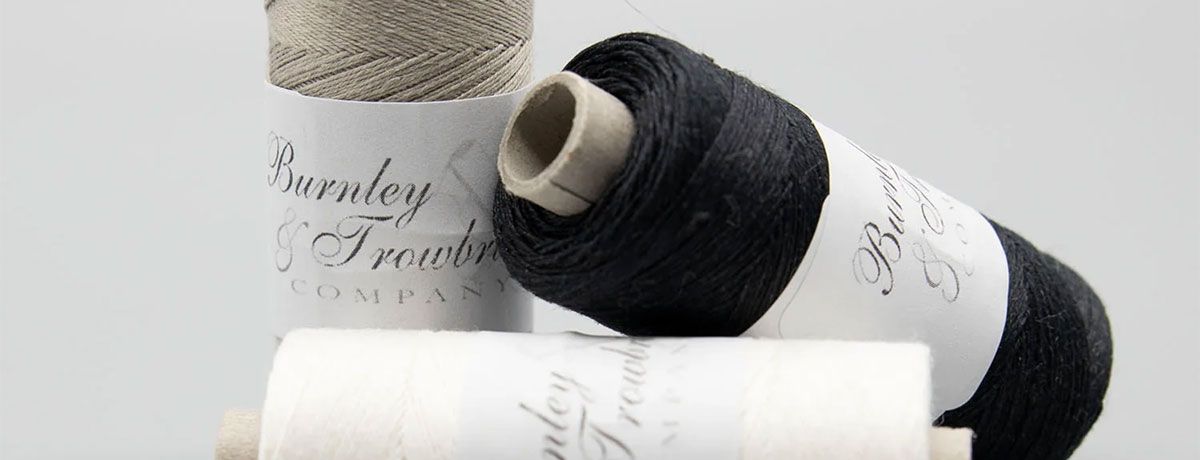Weaving the Future of Fashion with 50/3 and 80/3 Linen Thread

In the world of textile manufacturing the thread choice is everything. Two of the main players in this game are 50/3 and 80/3 linen thread, both loved for their properties and uses. For fashion manufacturers wanting to get it right, understanding these threads is key. This post will look at their characteristics, uses and how they hold the answer to sustainable and high quality garment production.
What is Linen Thread in Textiles
Linen thread from the flax plant is loved for its strength and beautiful sheen. In the textile industry 50/3 and 80/3 linen thread are the main players. Linen thread is available in various colors, allowing customers to choose the right color to match their fabric. These threads differ in thickness and ply but have the same goal of improving garment quality. Linen sewing thread is not just a tool it’s part of the design process, it affects both the aesthetic and functional of a garment.
50/3 Linen Thread Weights
The 50/3 linen thread is strong and durable. The typical length of 50/3 linen thread is approximately 200 meters. With a thicker composition it’s perfect for garments that need strength like outerwear and heavy duty clothing. This linen thread for sewing is for seams that get a lot of wear and tear. Its ability to withstand tension makes it a must have in the production of strong garments and longevity and resilience.
In addition to strength 50/3 linen thread has a natural texture that adds character to garments. When used in stitching it gives a unique finish that complements the roughness of the fabric. Manufacturers love how easy it is to use in machines and that’s why it’s a go to for durable clothing lines. The thread is sold in 50gm spools, making it convenient for various sewing applications.
The Finer 80/3 Linen Thread
Unlike the 50/3, the 80/3 linen thread is finer and more delicate. It’s for applications where subtlety is everything. The 80/3 linen thread is available in various weights, making it suitable for different sewing needs. This thread is perfect for fine fabrics where a light hand is needed. Its delicacy makes it great for detailed stitching, lacework, and lightweight garments where elegance trumps brute strength.
The 80/3 thread brings precision to sewing so you can make intricate patterns and designs that are both beautiful and structurally sound. It’s used in delicate fabrics like linens and silks, and it comes in a wide range of colors, making it versatile enough to produce garments that are both sophisticated and durable.
The Two Linen Thread Titans
When choosing between 50/3 and 80/3 linen thread manufacturers need to consider the garment’s purpose and fabric type. 50/3 and 80/3 linen thread are also commonly used in bookbinding projects due to their strength and appropriate characteristics. 50/3 is strong and can handle stress so it’s for heavier garments. 80/3 is fine and is for delicate fabrics and intricate designs.
Each thread type has its strengths and weaknesses and the choice depends on the specific garment being produced. 50/3 is about durability and 80/3 is about delicacy and precision. Understanding these differences will make a big impact on the final product’s quality and functionality. The choice of thread can also be influenced by the manufacturer, especially if certain colors or types are discontinued.
How to Use Linen Thread in Sewing and Manufacturing
To get the most out of linen thread manufacturers should follow best practices in selection and application. Start with the right thread, match the thread type to the fabric and intended use of the garment. Keeping a variety of thread colors in stock is important to meet diverse needs. Proper stitching techniques will make the thread strengthen and beautify the garment.
Maintenance is another key. Storing the threads properly to avoid deterioration is crucial. Regular checks and replacements are necessary to maintain the quality of the sewing process so every garment meets the highest standards. The selection of thread colors, including beige, caters to the preferences of bookbinders, showcasing the thread's strength and durability.
Linen Thread with Beautiful Sheen in Real Life
Global garment manufacturers have been using linen thread to produce garments that are top notch in quality and design. A well known workwear brand uses 50/3 linen thread to make their products withstand rough conditions. A high end fashion label uses 80/3 linen thread to make lace dresses, often incorporating violet linen thread to add a touch of elegance, showing the versatility of the thread.
These examples show how choosing the right linen and thread combination can lead to success and recognition in the fashion industry. By matching thread to brand identity manufacturers can carve a niche and build a loyal customer base.
The Green Option: Sustainable Linen Thread
In an era where sustainability is key linen thread is the green choice. Derived from the flax plant it’s biodegradable and requires less resources to produce than synthetic threads. So linen thread is a sustainable option that matches the growing demand for environmentally responsible manufacturing.
By using linen thread manufacturers can reduce their environmental impact and maintain high quality production. This benefits the planet and the consumer who is becoming more and more aware of sustainability issues.
Conclusion Linen Thread World
50/3 and 80/3 linen threads have their own advantages for garment manufacturers, from strength and durability to finesse and beauty. By knowing their properties and applications manufacturers can make informed decisions that will improve both quality and sustainability of their products. The future of linen thread in the textile industry looks bright as more brands discover it can make garments that are both beautiful and durable.
For manufacturers who want to explore this opportunity now is the time to start using linen threads in their production. So they can be ahead of the game and meet the changing demands of the fashion industry.
